Ten Classic Waterfowl Hunts
Visiting these iconic destinations should be on every waterfowler's bucket list
Visiting these iconic destinations should be on every waterfowler's bucket list
By Wade Bourne
From the Ducks Unlimited magazine Archives | Updated: March 2024
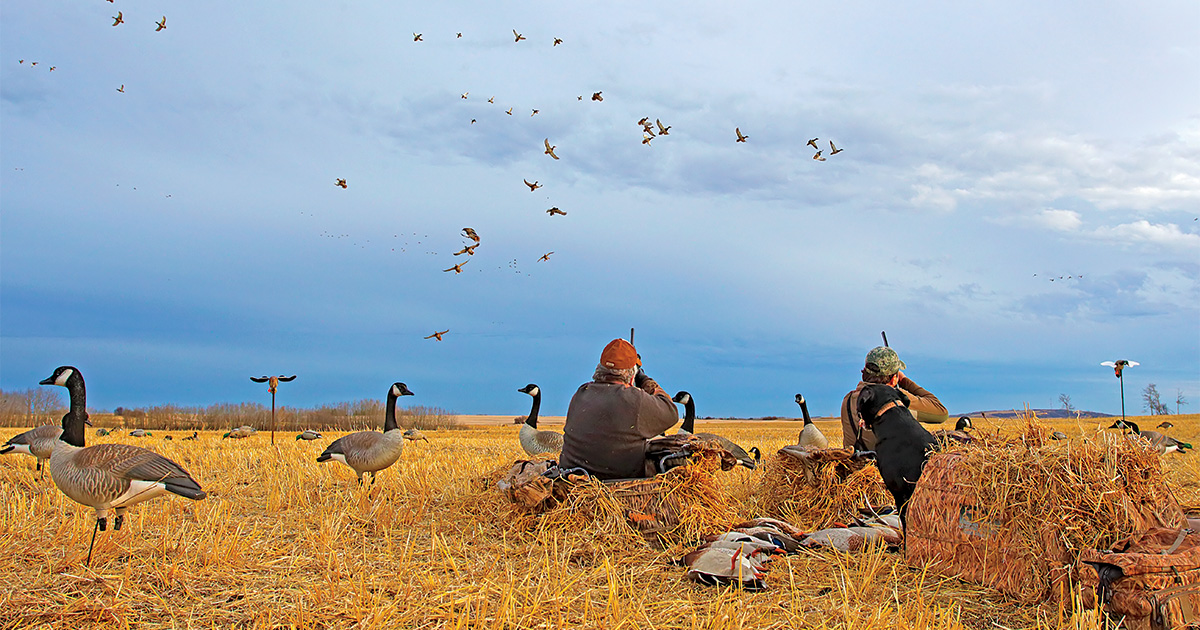
An autumn pilgrimage to the Canadian prairies is a waterfowler's dream trip. Extended sunrises, frosty air, golden grainfields, and an abundance of ducks and geese delight the senses of hunters who visit the provinces of Manitoba, Saskatchewan, and Alberta in early fall.
Hunting opens in these provinces on September 1, though most visiting waterfowlers come later in the season, when birds are more concentrated and in better plumage. Bag limits are generous and hunting opportunities are plentiful on both public marshes and private land. Most hunting is done from layout blinds in harvested grain and pea fields, which attract huge numbers of waterfowl feeding voraciously to build up fat reserves for the approaching southbound migration.
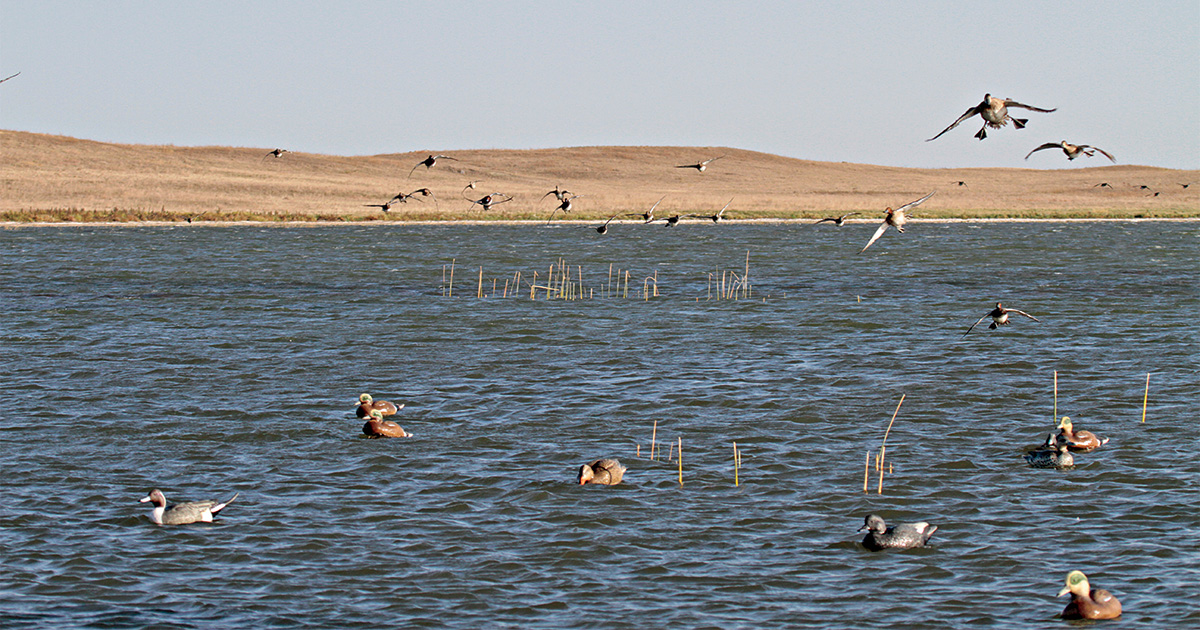
Although known for its outstanding goose and dabbler hunting, Prairie Canada also offers abundant opportunities to bag diving ducks.
"My definition of a classic Canadian prairie hunt consists of a combination of white-fronted geese and mallards in western Saskatchewan," says Dr. Scott Stephens, director of regional operations in Ducks Unlimited Canada's Prairie Region. "These birds swarm into pea fields in early October. They are more than plentiful, and there's very little hunting pressure. Landowners almost always welcome visiting hunters. It's an ideal mix of circumstances."
According to Stephens, driving around and scouting is the best way to locate birds. "We usually put out six dozen white-front decoys and mix in a couple of dozen field mallards. That's all you need. The peas are almost magnetic to the geese and ducks," he says.
CONTACT: Travel Alberta, Travel Manitoba, and Tourism Saskatchewan
In mid-September, coastal Louisiana is a magnet for blue-winged teal, which are typically the first ducks to depart from their prairie nesting grounds. By opening day of the special early teal season, great numbers of these birds have amassed in Cajun Country. Those who pursue bluewings in the region's abundant marshes and rice fields can expect challenging shooting and delicious eating from these sporting little ducks. The early teal season also provides hunters with an exciting tune-up before the regular duck season.
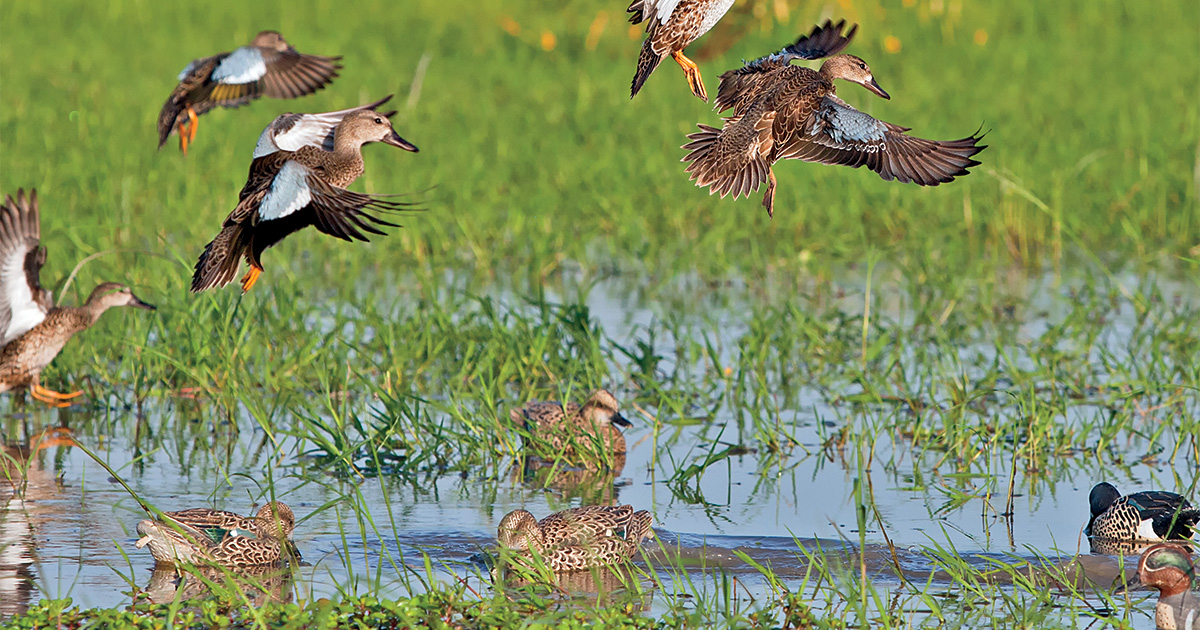
Bluewings flock to south Louisiana in September.
Freelance hunting opportunities can be found on several national wildlife refuges along the Louisiana coast, including Sabine, Lacassine, and Delta National Wildlife Refuges. Numerous lodges and guide services offer early teal hunting packages as well. The cast-and-blast packages put together by Grosse Savanne Waterfowl and Wildlife Lodge in Cameron Parish allow you to hunt teal in the morning and fish for flounder and redfish in the afternoon. This Orvis-endorsed lodge's accommodations, delicious food, and Cajun joie de vivre will help make your visit a truly memorable experience. Another great option is Hackberry Rod and Gun, operated by the Stansel brothers, on Calcasieu Lake.
CONTACT: Louisiana Department of Wildlife and Fisheries, Grosse Savanne Waterfowl and Wildlife Lodge, and Hackberry Rod and Gun
The canvasback bears the title "king of ducks" because of its beauty, powerful flight, and flavor. A bull can is rightfully considered a trophy bird by most waterfowlers, and canvasback mounts grace the walls of many hunt clubs, offices, and family rooms.
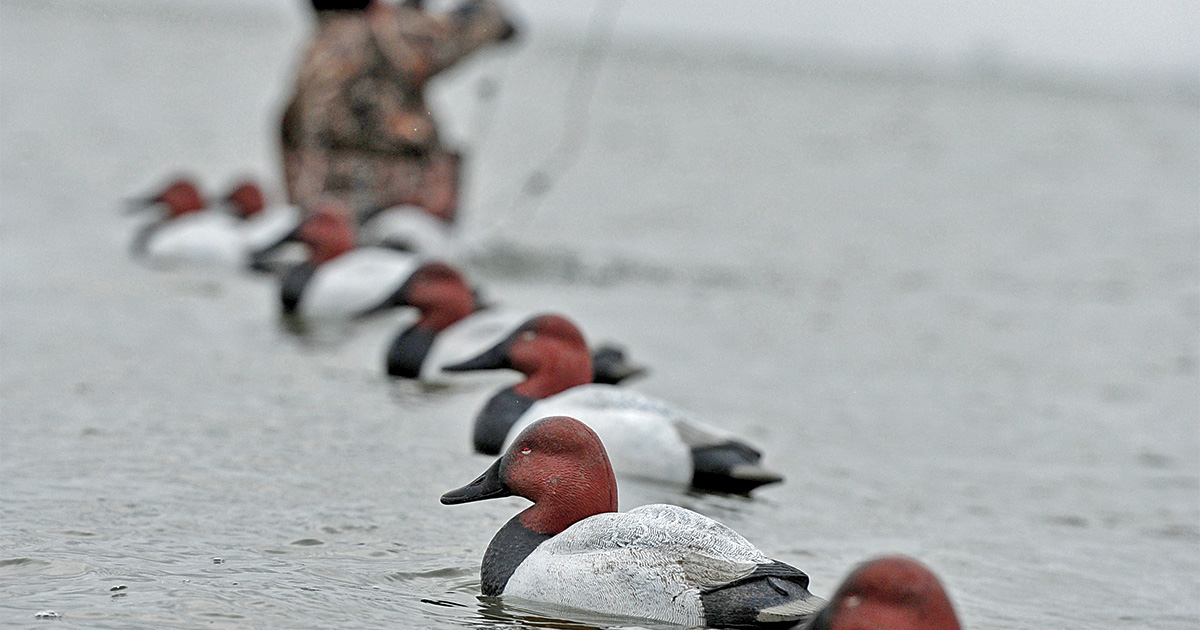
Big decoy rigs set on longlines are part of the classic canvasback hunting experience on the Upper Mississippi River.
One of the best places to bag a canvasback is on the upper pools of the Mississippi River, which offer extensive public hunting opportunities. These pools are part of the Upper Mississippi River National Wildlife and Fish Refuge-a prime stopover for canvasbacks and many other waterfowl species during the fall migration. The birds build to peak numbers in early November, when upward of 200,000 cans gather there.
Going with a pro is a good way to increase your odds of bagging a trophy canvasback. Matt Ellis, who runs Divers & Dabblers guide service out of Stoddard, Wisconsin, guides on Pool 8 from a 20-foot boat blind. "The canvasbacks roost in huge flocks out in midpool, and most mornings they start getting up at first light," Ellis says. "It's a spectacular sight. Usually there will be thousands of them on the wing. When the weather cooperates, we take our canvasback limits without much trouble. In addition, we typically shoot a broad mix of other divers and puddle ducks."
CONTACT: Upper Mississippi River National Wildlife and Fish Refuge and Dabblers & Divers
Eastern Arkansas is the wintering ground for a large percentage of Mississippi Flyway mallards, and many duck hunters believe that pursuing these birds in flooded green timber is the pinnacle of this sport. Waterfowlers attempt to toll greenheads down through the canopy of trees and into their decoys. The birds tend to work best when the water is rising and the sky is sunny.
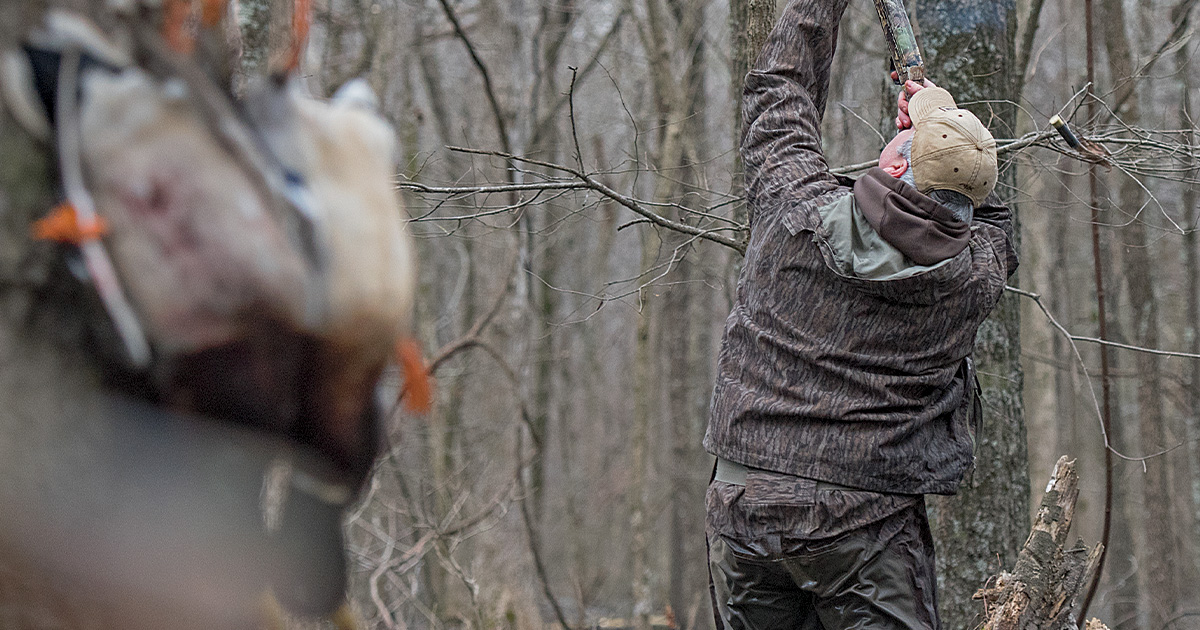
Hunting mallards in green timber may be the pinnacle of the sport.
"I don't think there's any finer duck hunting than to stand in flooded timber with greenheads fluttering down around you," says Jim Ronquest of RNT Game Calls. "What it's like is hard to put into words. You just have to experience it to understand what I'm talking about."
Waterfowlers looking for a green timber experience have several options on both public and private lands. The Arkansas Game and Fish Commission has established a number of wildlife management areas with flooded timber habitats. The Cache River and the White River National Wildlife Refuges can also offer spectacular timber hunting when the rivers overflow their banks and flood adjacent bottomlands. Several commercial hunting clubs in eastern Arkansas offer guided green timber hunts as well.
CONTACT: Arkansas Game and Fish Commission, Arkansas Tourism, and Stuttgart Chamber of Commerce
The Central Valley of California draws some 7 million ducks and geese each winter. The famed Grasslands Ecological Area, which encompasses more than 160,000 acres, is the largest contiguous wetland complex in the region. Approximately one-third of this area is open to public hunting. Waterfowlers typically hunt from sunken blinds or simply hide among bulrushes, or tules, and sit on marsh stools in shallow water.
"Hunters can come here from out of state, buy a two-day license, and enjoy a grand shoot on one of the Grasslands' public areas," says Dr. Fritz Reid, director of conservation programs for the Boreal and Arctic in DU's Western Region.
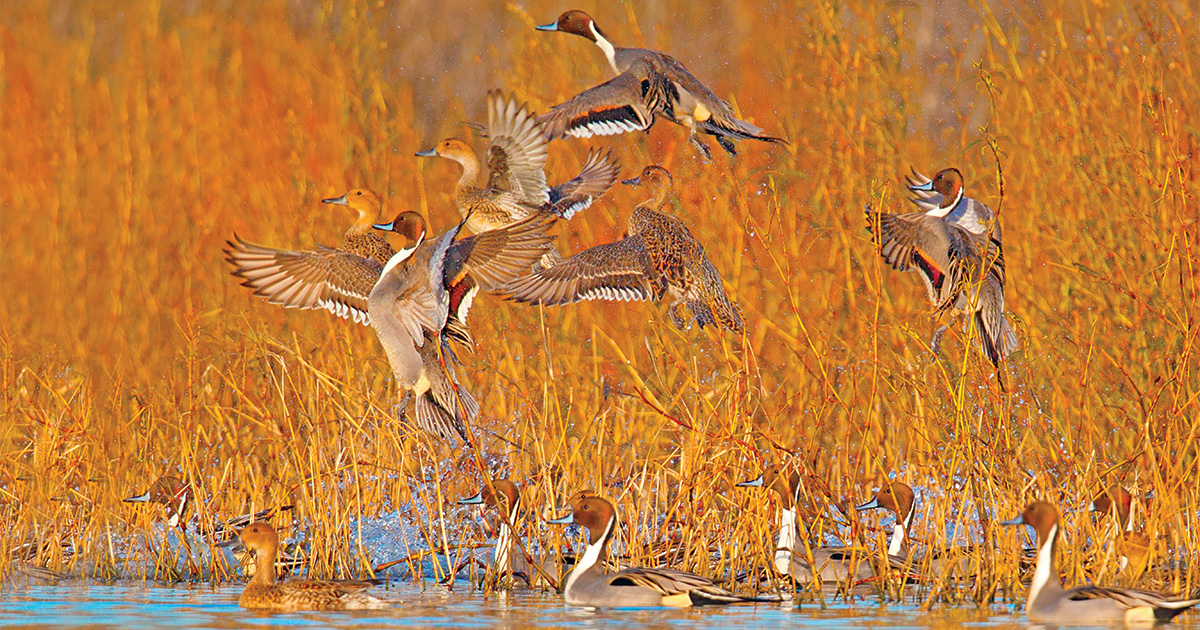
Pintails are a favorite quarry of waterfowlers in California's Central Valley.
"Two bull sprigs and five green-winged teal drakes-that's what I call a classic bag in this region. And yes, it's very possible to take this limit on the Grasslands of the San Joaquin Valley."
Hunting is available on public areas on Wednesday, Saturday, and Sunday. There's a drawing for hunting slots, but enough are usually available to accommodate most hunters on any given day. One last word of advice from Reid: "You might want to leave your mallard call at home and bring a whistle instead. Pintails and greenwings respond very well to whistles, as do the occasional wigeon that fly by."
CONTACT: California Department of Fish and Wildlife
Some waterfowlers claim that hunting bluebills (greater and lesser scaup) and other diving ducks from a wave-tossed layout boat is like trying to hit a fly with a BB gun. These birds can rocket into your spread at eyeball level. To catchup with them, you have to rise from a reclining position, mount your shotgun, and swing fast. With the ducks juking and the boat bobbing, the challenge can be tremendous.
"Let's just say this style of hunting can be very exciting," says Captain Ryan Engel of Port Washington, Wisconsin. Engel runs Coastal Wisconsin Outfitters LLC, which specializes in open-water diver hunts on Lake Michigan and Green Bay.
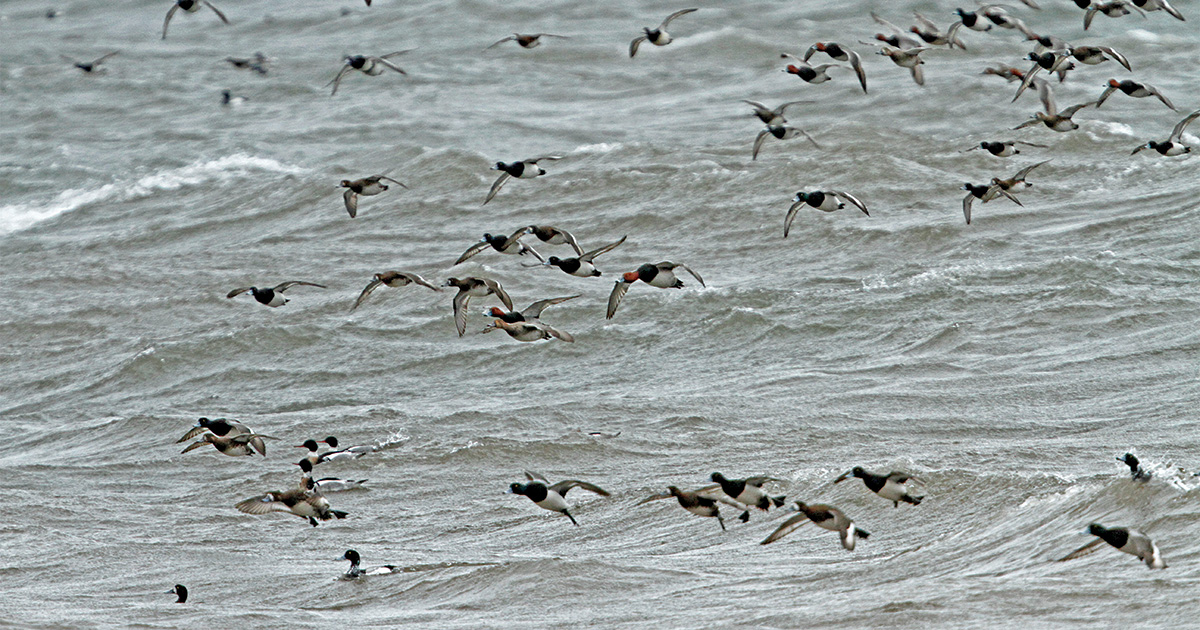
Diver hunting is a time-honored tradition on the Great Lakes.
"Bluebills start showing up on Lake Michigan by mid-October, and the shooting can be good from then through the season's end in early December [in the south zone]," Engel says.
Engel typically strings five to 10 dozen decoys on longlines and anchors one or two layout boats in the spread. "We watch from a tender boat at a distance far enough back to keep from spooking the ducks as they move sporadically through the morning," he adds.
Public hunting access abounds on the Great Lakes, but freelancers need a seaworthy boat and specialized decoys and other gear. First-timers should consider hiring an outfitter, both for safety's sake and to increase their chances of getting into birds.
CONTACT: Wisconsin Department of Natural Resources, Michigan Department of Natural Resources, Ohio Department of Natural Resources, and Coastal Wisconsin Outfitters
Approximately 100,000 black ducks winter in New Jersey's salt marshes, and about 12,000 of these birds are bagged by waterfowlers each year. That's not to say the harvest comes easy. "Black ducks may be abundant here, but they can still be difficult to bag," says Ted Nichols, wildlife biologist for the New Jersey Division of Fish and Wildlife. "These birds rightfully deserve their reputation as being among the wariest, most difficult waterfowl to hunt."
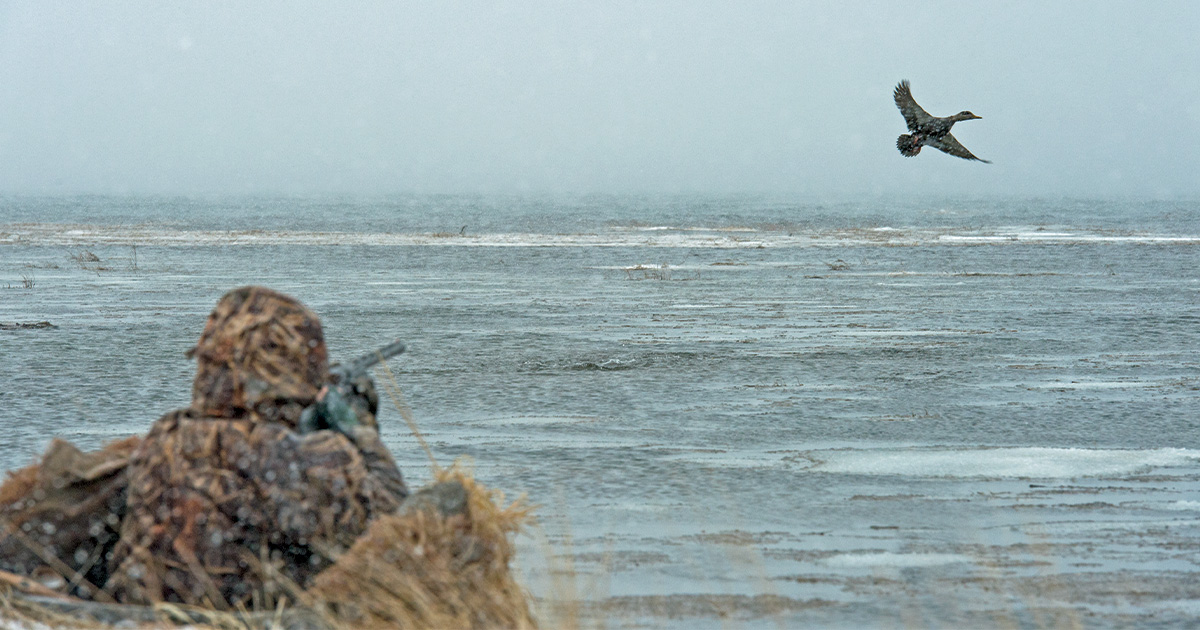
Bagging a black duck in a coastal salt marsh is among waterfowling's greatest challenges.
Finding places to hunt these prized Atlantic Flyway birds isn't usually as difficult as figuring out how to overcome the unique challenges of this coastal environment. "There are tens of thousands of public acres of coastal marsh where black ducks are plentiful," Nichols says. "Access and tides here can be tricky, though. Many an unsuspecting hunter has been stranded until the next high tide refilled the marsh."
To avoid such mishaps, hunters unfamiliar with the area should consider hiring a local guide or outfitter. Having someone show you the ropes can mean the difference between success and failure. A good guide can open the door to other opportunities as well. "My clients bag a lot of black ducks, and they take good numbers of mallards, gadwalls, and other species too," says Captain Brian LaFay, of Reedy Creek Outfitters, who frequently hunts along the famed Barnegat Bay. "We also have some excellent Atlantic brant hunting on the coast, so visiting hunters can frequently hunt both black ducks and brant on the same trip."
CONTACT: New Jersey Division of Fish & Wildlife and Reedy Creek Outfitters
In Nebraska, the stretch of the Platte River west of Grand Island hosts large numbers of Canada geese and dabbling ducks during fall and winter months. "Many species of waterfowl pass through here during the fall migration, and some birds actually winter here," says Mike George, DU's director of conservation programs in Nebraska, Kansas, Colorado, and Wyoming. "You name it, and you can find it along the Platte."
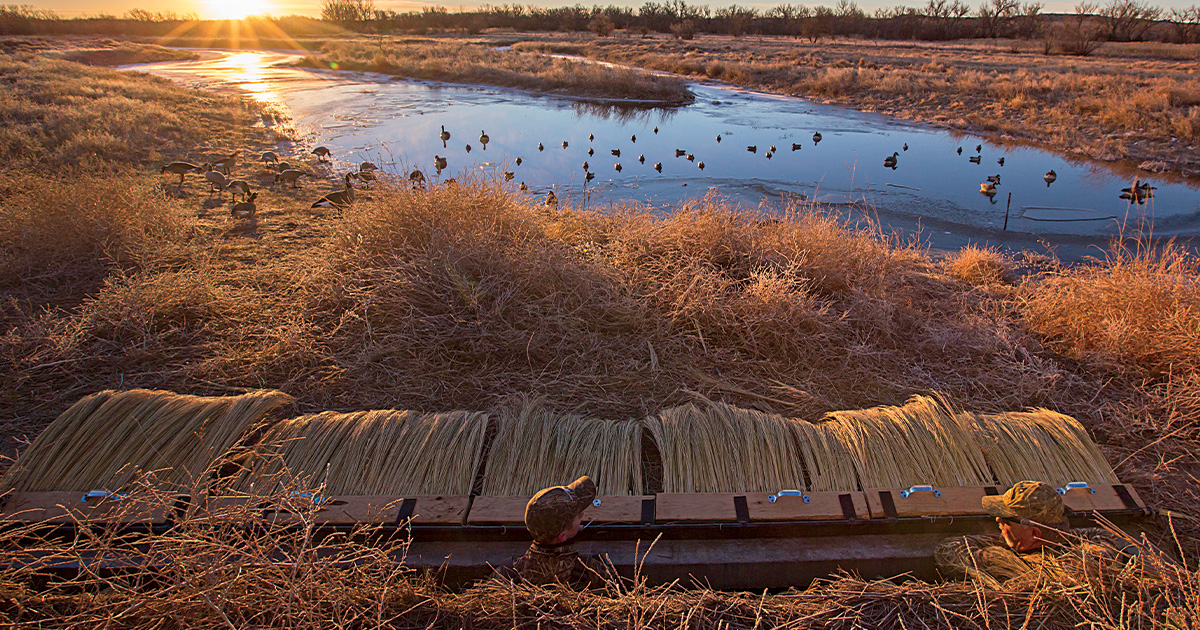
Few places offer more productive late-season duck and goose hunting than the Platte River in Nebraska.
George adds that the late season is the best time to hunt the Platte. "Much of the river is frozen by then, but if you can find open water, you can have an amazing hunt in the shallows and on sandbars," he says. "I'd recommend the area west of North Platte in the late season."
Public hunting opportunities are widely available all along the western section of the Platte River. Ducks Unlimited, the Nebraska Game and Parks Commission, and the Platte River Recovery Implementation Program all maintain riverine areas where hunting is available on a first-come, first-served basis. Guided hunts along the Platte are also available through a variety of local outfitters.
CONTACT: Nebraska Game and Parks Commission
During the second part of Texas's split duck season, which runs from mid-December to late January in the south zone, huge concentrations of redheads and pintails gather in the state's Mid-Coast region. Sporting their brightest mating plumage, the drakes of both species are an inspiring spectacle for waterfowlers hunting the area's storied saltwater marshes.
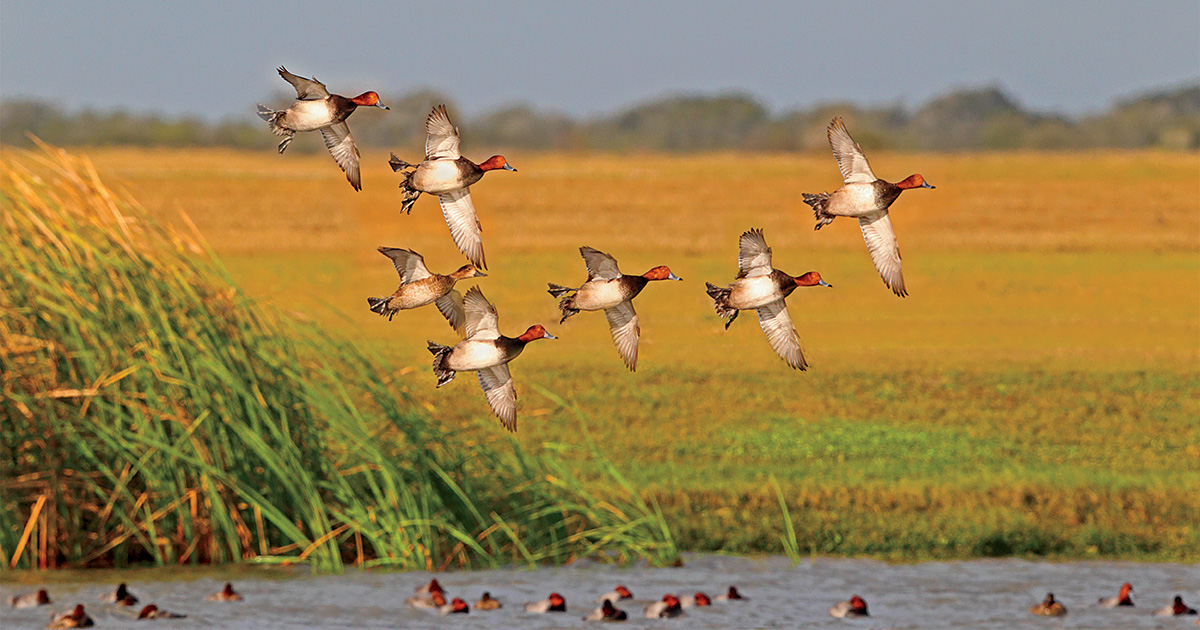
Thousands of redheads winter along the Texas Mid-Coast, providing great sport for waterfowlers.
"Matagorda Bay has one of the largest wintering populations of redheads in North America," says Captain Will Granberry, who owns Avian Skies, an outfitter in Edna, Texas. "It's not uncommon to see several thousand ducks during a morning or afternoon hunt. The birds decoy well, and hunters often take turns shooting redhead drakes [the limit is typically two per person per day]. Pintails are another big attraction, and gadwalls, scaup, teal, and other species provide opportunities for a nice mixed bag."
Because much of Matagorda is open to public hunting, the bay is ideal for freelancing. A shallow-draft boat is a must for navigating the area's numerous flats and marshes. After finding where the birds are working, hunters set up in knee-deep water, deploy four to six dozen redhead and pintail decoys, and hide in black mangroves or marsh grass.
CONTACT: Texas Parks and Wildlife Department and Avian Skies
The Light Goose Conservation Order has been gaining in popularity in recent years.
A special spring season on these birds was established in 1999 to try to control their numbers. The conservation order removed bag limits and allowed hunters to use electronic calls (when no other waterfowl are in season) and unplugged shotguns to increase the harvest of light geese. These measures have been a windfall for waterfowlers who hunt these challenging birds across much of the United States and into Canada. Light goose hunting hotspots include the Gulf Coast, Mississippi Alluvial Valley, northwest Missouri, Nebraska's Rainwater Basin, and the Dakotas.
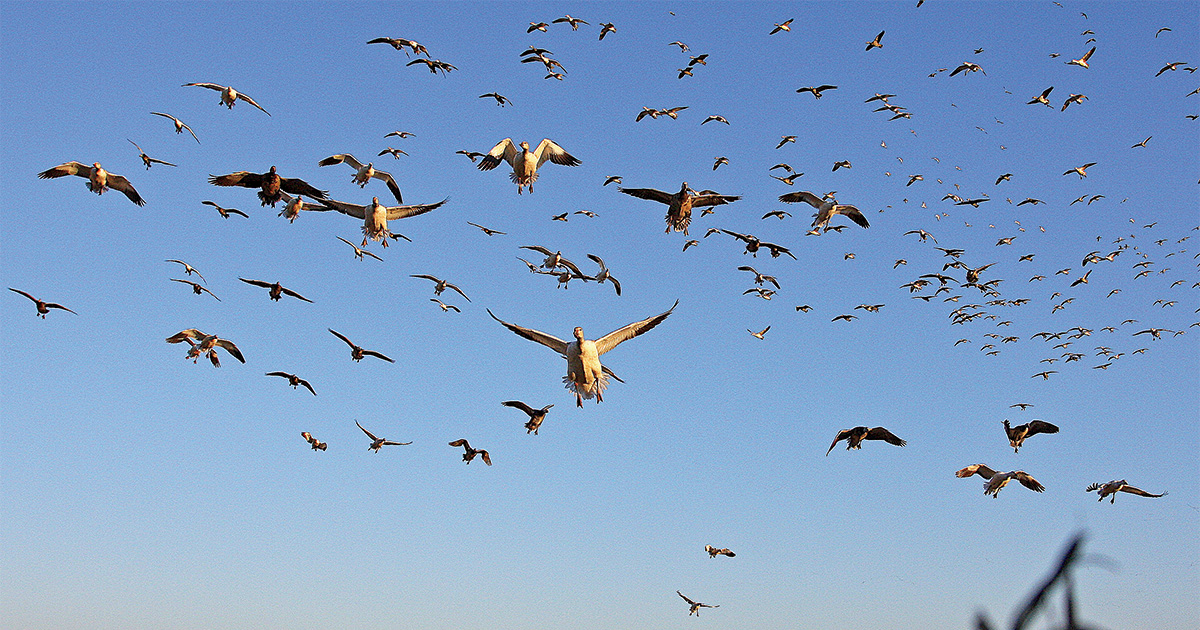
"Spring snow goose hunting is some of the most fun you can have in waterfowling," says John Gordon of Mid-South Goose Hunts, located in Hernando, Mississippi. "It offers the greatest spectacle in the sport. You can have thousands of geese coming in at once. The noise is deafening, and the commotion is extremely exciting."
Gordon says the keys to success in spring snow goose hunting are being in the right spot, staying well hidden, and using a combination of electronic calling and motion in the decoys. "Snow geese are wary birds, especially the adults," he explains. "But if you're in a good field and catch the geese in a working mood, sometimes they'll lose all caution and pour in. Trust me, there's nothing else like it in waterfowl hunting!"
Ducks Unlimited uses cookies to enhance your browsing experience, optimize site functionality, analyze traffic, and deliver personalized advertising through third parties. By continuing to use this site, you agree to our use of cookies. View Privacy Policy